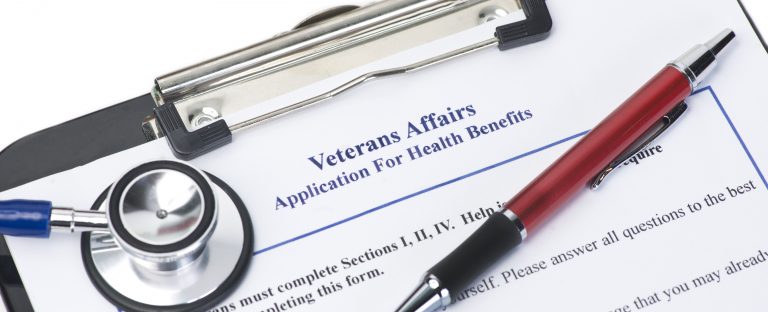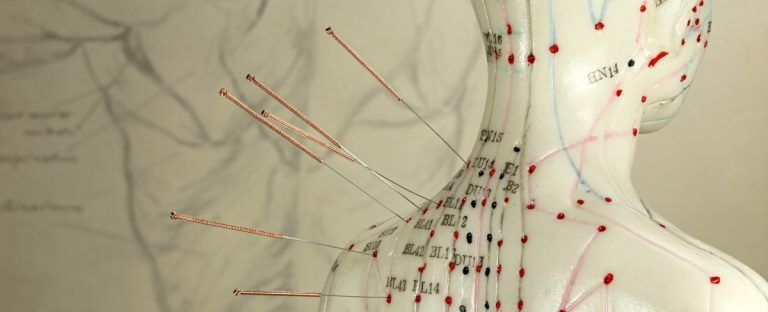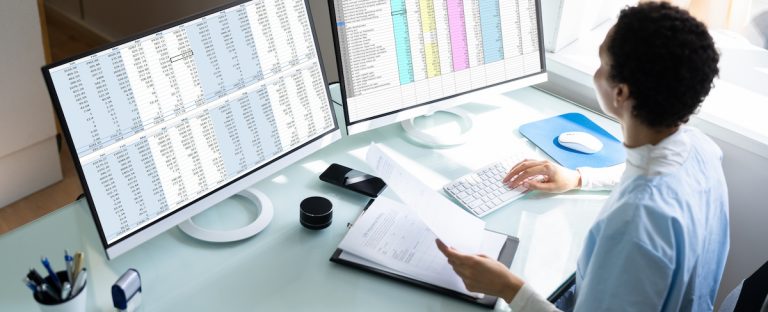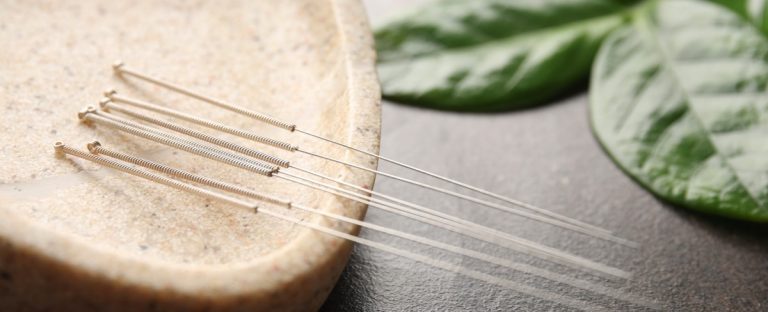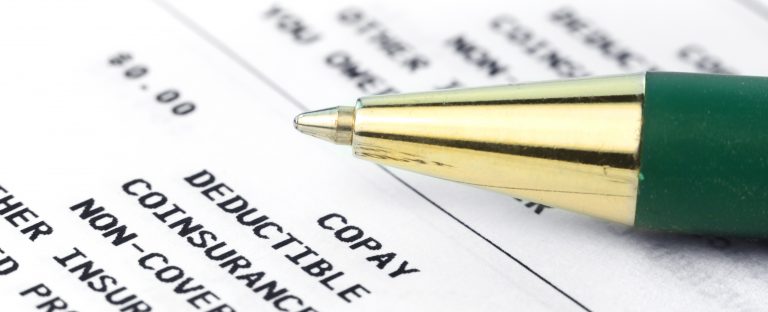The Department of Veterans Affairs (VA) classifies acupuncture as a complementary and integrative health (CIH) approach within the innovative VA’s Whole Health system of care. This is great news for acupuncture practices because it means they can be reimbursed for providing services to veterans when acupuncture care is deemed clinically necessary by the patient’s care team.
Acupuncture can be a great treatment for veterans suffering from a variety of complications. Besides its benefits as a pain reliever, acupuncture treatments are also a safer method than opioids for pain management. As an acupuncture insurance billing company, we know many acupuncture providers are interested in providing services to military veterans. However, it seems most providers still are not familiar with the process of enrolling with the VA. If you’re looking for how to optimize your VA medical billing, or have questions about the billing process in general, then follow this guide for billing the VA for acupuncture in six easy steps!
The Advantages of Acupuncture For Veterans

Acupuncture has been growing in popularity as an effective and minimally invasive pain relief method, as opposed to conventional pain relievers. Besides their minimal burden on the patient, acupuncture treatments have been shown to be sufficient in treating veterans for a wide range of conditions.
Acupuncture as a Pain Reliever
Acupuncture treatments have been increasingly gaining traction as an integrative therapy method for effective pain relief. As a minimally invasive procedure, acupuncture is considered generally very safe when administered by a trained provider. While ongoing studies are finding that acupuncture may offer more benefits than for pain management alone, the VA considers acupuncture effective for veterans who suffer from:
- Pain associated with an injury or illness
- Nausea and vomiting after an operation
- Nausea and vomiting related to chemotherapy
- Knee pain from osteoarthritis
- Low back pain
- Depression or other mental health concerns
- Substance dependency
Acupuncture for veterans may be effective as a stand-alone treatment or adjunctive with other medical treatments.
Acupuncture as an Opioid Drug Alternative
Acupuncture has the potential to become a front-line treatment for pain management as an alternative to opioid drug prescriptions. Acupuncture and other holistic practices have been helping reduce the number of active service members prescribed opioids. In 2011, 26 percent of all service members were prescribed at least one type of opioid medication. That number has since gone down due to the armed forces offering alternatives, such as acupuncture, for conventional pain killers.
Veterans can take advantage of the health benefits of acupuncture without the need to subscribe to painkillers. As an opioid drug alternative, acupuncture can be used in place of the prescriptions for acute to chronic pain for the same effects with none of the side effects.
Acupuncture as a PTSD Treatment
Although more research needs to be done, acupuncture holds promise to help treat PTSD and stress-related conditions. The prevalence of PTSD among veterans ranges widely throughout different eras and wars. While one major study of 60,000 Iraq and Afghanistan veterans found that over 13% of them tested positive for PTSD, other studies have found the rate to be as high as 20% to 30%.
According to the American Massage Therapy Association (AMTA), over 40 percent of adults suffer adverse health conditions due to stress and 70 to 90 percent of visits to primary care physicians are for stress-related problems. Studies show that acupuncture, as well as other holistic practices, can significantly help reduce stress, anxiety and depression — which all contribute to PTSD. Acupuncture for veterans and active military members can have a significant impact on their well-being of life and overall wellness.
How to Start Treating Veterans at Your Acupuncture Practice
While the VA may hire licensed acupuncturists to provide direct care at VA Medical Centers, this is not always a convenient solution for patients or for acupuncture practices. Fortunately, the VA’s Community Care Network (CCN) allows you to become credentialed as a VA healthcare provider, which makes it possible for your practice to deliver acupuncture for veterans outside of the VA Medical Center system. Working through your VA region’s CCN is a great opportunity to grow your practice due to the unique patient population, reasonable reimbursement rates, and patient visit pre-authorization
If a VA beneficiary lives too far away from a VA location or the facility isn’t able to treat a patient within 30 days, the VA refers them to registered community providers. Depending on which region of the country you’re located in, one of two companies, TriWest or Optum, will be responsible for credentialing, administering, and processing CCN payments. Given the high level of organization, the CCN is a great opportunity for licensed acupuncture practices that are just starting out accepting insurance payments.
The team at Holistic Billing highly recommends that practices get involved with their regional CCN. It’s a great way to help grow your patient pipeline and while also contributing to the strengthening relationship between the VA and holistic healthcare providers like acupuncturists, massage therapists, and chiropractors.
Checklist to Complete Before Seeing VA Patients at Your Acupuncture Practice

Before you can start receiving VA patients at your practice, there are some VA billing guidelines you must follow. Make sure you complete this checklist before receiving patients so you can bill the VA for acupuncture treatments.
Step 1: Apply for an NPI Number.
We recommend you use a web-based application for NPI applications. To complete the process, you can visit the National Plan and Provider Enumeration System (NPPES) website (https://nppes.cms.hhs.gov/#/).
Step 2: Obtain a CAQH number.
You need a CAQH ID and a login and password for the website to build an online profile so that healthcare entities can access your credentials. A CAQH ID can be obtained straight from the website with the new CAQH Proview. https://proview.caqh.org/PR/Registration. We recommend authorizing access to “any organization that requests access” to avoid future changes.
Step 3: Establish your region.
The VA Community Care Network is divided into six regions covering the continental United States and Hawaii, the Caribbean, and the Pacific Islands. TriWest manages the Western networks, while Optum handles the Eastern regions. You can visit the VA website to determine which region your practice resides in.
Then get credentialed with the region’s administrator.
Before the network will refer patients to your practices, you must be credentialed. In most circumstances, completing the credentialing process takes at least three months. You can start the process by contacting Optum or Triwest directly.
Region 1: 888-901-7407 (Optum)
Region 2: 844-839-6108 (Optum)
Region 3: 888-901-6613 (Optum)
Region 4: 866-286-4174 (Triwest)
Step 4: Complete registration paperwork.
After the preliminary credentialing process, you must sign the necessary paperwork to become fully registered with the network. Forms are typically submitted electronically through DocuSign and will stipulate any final requirements that must be met to complete the credentialing.
Once your practice has been accepted into the network, you will receive referrals for VA patients authorized to receive acupuncture or massage treatments. Your CCN administrator will email the patient’s authorization letters before their initial visits.
How to Submit a VA Insurance Claim
After you’ve received a VA patient’s authorization letters, you’re able to begin treatment. In most cases, the VA will authorize a certain number of visits. While you are certainly free to schedule additional visits, keep in mind that you will not be able to bill the VA for these visits. Make sure patients understand which treatments will be covered by the VA and which will be out-of-pocket or require another source of insurance.
When submitting a VA insurance claim for the first time, you will need to submit all the authorization letter pages together with the claim. Make sure that you transmit all the following information with your claim to avoid a denial:
- A cover letter.
- The date range for services.
- Authorization numbers.
- The total visits authorized.
- The patient’s demographics will also need to be attached, including address, date of birth, and social security number.
- Documentation and CPT codes of reatments administered.
By following this checklist, you can ensure your Veterans Administration insurance claim will have all the accurate information it needs for a smooth billing process.
Additional VA Medical Billing Questions
Find the answers to some of the more common VA medical billing questions.
Does the VA Bill Medicare or Medicaid for Services?
The VA does not currently bill Medicare or Medicaid. However, there is information for veterans about the new Medicare prescription drug benefits.
Will the VA Pay for Massage Therapy?
Clinical massage therapy is one of the complementary integrative health (CIH) approaches covered by the VA’s Whole Health system of care. The provider must have passed requirements for basic or advanced training and maintains the required licenses and credentials to practice massage therapy.
What are the Requirements for VA Covered Acupuncture Practices?
Credentialed acupuncturists must be properly licensed and meet the proper training requirements based on the scope of their practice to ensure veterans are receiving the highest quality of care.
What Types of Acupuncture Does the VA Cover?
Besides traditional acupuncture, providers may be eligible to become certified providers for Battlefield Acupuncture (BFA). BFA is an acupuncture protocol where needles are placed in the ear to reduce pain. Since BFA believes the entire body is represented in the ear, inserting small needles in the ear alone can affect pain throughout the whole body.
Maximize Your Reimbursements for VA Insurance Claims with Holistic Billing

As a medical billing provider with a special focus on holistic and integrative health practices, Holistic Billing Services can help you get credentialed by your region’s CCN and help you start treating veterans right away. We have plenty of experience navigating the unique VA billing guidelines, which allows us to maximize your reimbursements and keep your practice’s revenue flowing.
To learn more about how you can get started providing acupuncture for veterans and active service members without worrying about having your VA claims denied, talk to our acupuncture billing and coding experts today!
Did you know that roughly 30% of medical billing claims are rejected? That’s a significant chunk of your overall healthcare revenue cycle that will cost you in the short and long run. These claims might be rejected for a few reasons – a key one which is inaccurate coding.
That’s why it’s essential for your acupuncture practice to leverage current CPT codes that accurately reflect the services rendered. Having to rework claims results in costly reimbursement delays plus it takes up your time and energy!
If your holistic practice continues to make mistakes with acupuncture CPT codes, you can have increased denial rates and declining insurance reimbursements, which could put your practice at risk. Accurate acupuncture CPT codes and billing practices can help ensure your holistic practice reaches its full revenue potential.
We want to help reduce your medical billing stress, so we’ve compiled a handy reference list of the acupuncture CPT codes to use in 2023. Be sure to bookmark this page so you can easily access it!
Top 4 Essential Acupuncture Billing Codes for 2023
The bulk of the services you will bill to insurance will likely fall under four essential acupuncture CPT codes. Since acupuncture services are always billed in 15-minute increments, your practice will use one code for the initial 15 minutes of service and then a separate code for additional units of time.
Your acupuncture CPT codes will only vary if you include electronic stimulation in your treatment.
- 97810 Initial Acupuncture: Initial 15-minute insertion of needles, personal one-on-one contact with the patient. (Do not report in conjunction with 97813; use one or the other.)
- 97811 Subsequent Unit of Acupuncture: Use one unit per each additional 15 minutes of personal one-on-one contact with the patient after the initial 15 minutes, with re-insertion of needles. (May be used in conjunction with either 97810 or 97813)
- 97813 Initial Acupuncture with Electrical Stimulation: Initial 15-minute insertion of needles, personal one-on-one contact with the patient. (Do not report in conjunction with 97810; use one or the other.)
- 97814 Subsequent Unit of Acupuncture with Electrical Stimulation: Use one unit per each additional 15 minutes of personal one-on-one contact with the patient, with re-insertion of needles. (May be used in conjunction with either 97810 or 97813)
Acupuncture CPT Codes for Medicare
January marks the three-year anniversary of Medicare expanding their coverage options to include acupuncture for treating chronic lower back pain. CPT codes related to billing Medicare for acupuncture treatments are as follows:
- 97810: Acupuncture, one or more needles, without electrical stimulation, initial 15 minutes of personal one-on-one contact with the patient
- 97811: Each additional 15 minutes of personal one-on-one contact with the patient, with re-insertion of needles
- 97813: Acupuncture, one or more needles, with electrical stimulation, initial 15 minutes of personal one-on-one contact with the patient
- 97814: Each additional 15 minutes of personal one-on-one contact with the patient, with re-insertion of needles
- 20560: Services with needle insertion(s) without injection(s) of 1 or 2 muscle(s)
- 20561: Services with needle insertion(s) without injection(s) of 3 or more muscle(s)
Prices will depend on the region of your holistic practice; look up specific codes based on your location here.
Acupuncture CPT Codes for Patients
Medical billing codes for patients can be broken down into two categories, new and returning patients:
2023 Billing Codes for New Patients
Use these acupuncture CPT codes for when your holistic practice receives new patients. As a reminder, a new patient is defined as a patient who hasn’t received professional services from you or another provider of the same specialty who has belonged to your practice within the past three years.
- 99202 Evaluation/Management (Expanded): Presenting problems are of low to moderate severity; requires an expanded problem-focused history, an expanded problem-focused examination, and straightforward medical decision-making; the provider typically spends 20 minutes face-to-face with the patient
- 99203 Evaluation/Management (Detailed): Presenting problems are of moderate severity; requires a detailed history, a detailed examination, and medical decision-making of low complexity; the provider typically spends 30 minutes face-to-face with the patient
- 99204 Evaluation/Management (Comprehensive): Presenting problems are of moderate to high severity; requires a comprehensive history, a comprehensive examination, and medical decision-making of moderate complexity; the provider typically spends 45 minutes face-to-face with the patient
Billing Codes for Returning Patients
These CPT codes for acupuncture can be used for your established patients. Returning patients are those who have received any professional services from you or another provider of the same specialty who has belonged to your practice within the past three years.
- 99212 Evaluation/Management (Limited): Presenting problems are self-limited or minor; requires a problem-focused history, a problem-focused examination, and straightforward decision-making; the provider typically spends 10 minutes face-to-face with the patient
- 99213 Evaluation/Management (Expanded): Presenting problems are of low to moderate severity; requires an expanded problem-focused history, expanded problem-focused examination, and medical decision-making of low complexity; the provider typically spends 15 minutes face-to-face with the patient
- 99214 Evaluation/Management (Detailed): Presenting problem(s) are of moderate to high severity; requires a detailed history, a detailed examination, and medical decision-making of moderate complexity; providers typically spend 25 minutes face-to-face with the patient
Medical Billing Codes for Physical Therapy Treatments
Acupuncture practices use a variety of treatments and modalities to help their patients; your practice may bill for the following:
- 20550 & 20551 Tendon Injection: Single tendon injection for the treatment of fasciitis. Could include multiple injections into a single tendon sheath (CPT code 20550) or the tendon origin (CPT code 20551)
- 20552 & 20553 Muscle Injection(s): Injections involving single or multiple trigger points. Could be used to treat one or two muscles (CPT code 20552) or three or more muscles (CPT code 20553)
- 97010 Heat Therapy: Application of a modality to one or more areas; hot or cold packs
- 97016 Cupping: The use of a vasopneumatic device may be considered reasonable and necessary for the application of pressure to an extremity for the purpose of reducing edema
- 97026 Infrared Therapy: The application of infrared therapy is considered medically necessary for patients requiring the application of superficial heat in conjunction with other procedures or modalities to reduce or decrease pain/produce analgesia or reduce stiffness/tension, myalgia, spasm, or swelling
- 97110 Therapeutic Exercise: One or more areas, every 15 minutes; therapeutic procedures to develop strength and endurance, range of motion, and flexibility with direct (one-on-one) patient contact
- 97112 Neuromuscular Reeducation: Treatments to restore movement, balance, coordination, kinesthetic sense, posture, and/or proprioception for sitting and/or standing activities with direct (one-on-one) patient contact
- 97140 Manual Therapy: Techniques such as mobilization and manipulation, manual lymphatic drainage, and manual traction, one or more regions, every 15 minutes with direct (one-on-one) patient contact
- 97124 Massage Therapy: Includes effleurage, petrissage, and/or tapotement (stroking, compression, percussion) with direct (one-on-one) patient contact
- 97530 Kinetic Activities: Use of dynamic activities to improve functional performance, every 15 minutes with direct (one-on-one) patient contact
Medicare Billing Codes for Principal Care Management (PCM) in 2023
Principal care management involves managing a single, complex chronic condition; the goal here is to deliver a focused treatment and management plan that addresses a patient’s chronic condition.
- 99424: Principal Care Management performed by a physician or non-physician provider for 30 minutes per calendar month
- 99425: Additional 30 minutes per calendar month
- 99426: PCM performed by clinical staff under the direction of a physician or other qualified healthcare professional for 30 minutes per calendar month
- 99427: Additional 30 minutes per calendar month
These codes will allow providers to report care management services for patients with chronic conditions, such as lower back pain, in an effort to improve monitoring these complex health problems.
Transform Your Medical Billing with HBS!
Balancing your acupuncture practice’s appointments, SOAP notes, billing and coding, all the while delivering care to your patients can be overwhelming. Save time, energy, and streamline your revenue cycle management by bundling your practice management with outsourced acupuncture insurance and Medicare billing!
As an experienced EMR and insurance billing provider for holistic practices, Holistic Billing Services can help your practice navigate the billing process to minimize denials and increase revenue. With a knowledgeable partner by your side, you can focus more on treating patients to help your acupuncture practice grow rather than worrying about insurance billing.
To learn more about our acupuncture billing services, talk to one of our friendly billing and coding experts today!
In the enduring fight to reduce the severity of opioid addiction, traditional and holistic approaches continue to overlap and present alternative methods for treating chronic ailments and improving mental health. One significant treatment that is a proven opioid alternative is acupuncture.
Acupuncture has its origins in traditional Chinese medicine and recent studies over the last few decades prove time and again its effectiveness in treating a variety of chronic pain conditions and more. In particular, acupuncture research has investigated its benefits for veterans—and the federal department of Veterans Affairs recently included acupuncture in its efforts to promote complementary and integrative health.
How did the VA come to this conclusion? And what does this relationship mean for your acupuncture practice and the veterans in your community? Keep reading to learn more about the history of acupuncture and the VA, plus some tips for billing the VA for acupuncture services provided to veterans.
Acupuncture & The VA: A Timeline
Let’s look at a brief timeline of acupuncture and the VA:
- 1998: The National Center for Complementary and Alternative Medicine (NCCAM) is established with the goal of rigorously testing the effectiveness of “alternative” medicines that existed outside the scope of traditional medicine
- 2005: The Institute of Medicine (IOM)—now known as the National Academy of Medicine (NAM)—reports on the relationship between “alternative” medicines and Americans partaking in them for their overall wellness; this report encourages educational curriculum regarding “alternative” medicines be included in the medical field so traditional physicians can help their patients navigate these treatments
- 2014: Congress changes NCCAM’s name to the National Center for Complementary and Integrative Health (NCCIH), indicating a change in attitude towards “alternative” medicines as a more serious and important approach to health and wellness
- 2015: A report conducted by the Veterans Health Administration (VHA) Healthcare Analysis and Information Group recognizes acupuncture as one of the most common complementary treatments, further validating acupuncture’s role in treating a variety of ailments
- 2017: VA Directive 1137 – Provision of Complementary and Integrative Health is approved, which establishes national VHA policy regarding the provision of CIH approaches; this includes acupuncture as a vetted and recognized complementary treatment for veterans
Evidence of Acupuncture’s Benefits for Veterans
The VA found that acupuncture provides numerous benefits to common ailments and conditions that veterans must live with, including:
- Lower Back Pain: A 2012 analysis of data on participants in acupuncture studies found that actual acupuncture was more helpful than either no acupuncture or placebo acupuncture
- Mobility: A 2008 study found that there was a significant improvement in mobility for patients with osteoarthritis of the knee when acupuncture treatments were included in their wellness plan
- PTSD: According to research published by the National Center for Biotechnology Information (NCBI), acupuncture can affect the autonomic nervous system, and the prefrontal as well as limbic brain structures, making it able to relieve the symptoms of PTSD
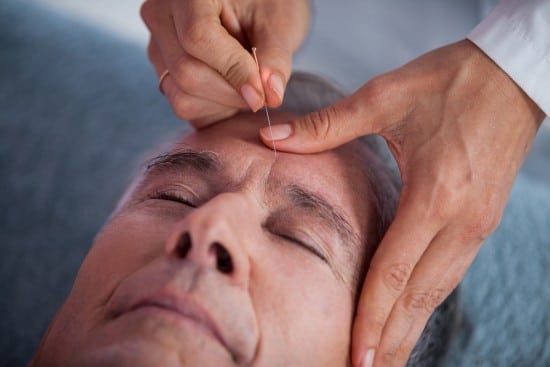
5 Steps for Billing VA for Acupuncture Treatments
The medical billing process for the Veterans Affairs department requires a few steps to accurately bill them and develop a relationship with them along the way; start with these foundational steps:
Acquire Your National Provider Identifier (NPI)
The first step to billing the VA for acupuncture is to acquire a National Provider Identifier (NPI). A National Provider Identifier, or NPI, is a 10-digit identification number issued to healthcare providers in the U.S. by the Centers for Medicare and Medicaid Services. Your acupuncture practice will need to apply for an NPI if you are a HIPAA-covered health care provider or if you bill insurance for your services.
Establish Your Community Care Network Region
The VA Community Care Network (CCN) is divided into six regions that cover the continental United States in addition to Hawaii, the Caribbean, and the Pacific Islands. TriWest manages the western networks while Optum handles the eastern regions. Find out which region your acupuncture practice resides in.
Get Credentialed in Your CCN Region
In order to provide great care for veterans at your holistic practice with acupuncture services, you’ll need to be credentialed with the region’s third-party administrator. This process typically takes at least three months to complete. Depending on your region, contact the following to get started with the credentialing process:
- Region 1: 888-901-7407 (Optum)
- Region 2: 844-839-6108 (Optum)
- Region 3: 888-901-6613 (Optum)
- Region 4: 866-286-4174 (Triwest)
- Region 5: 877-226-8749 (Triwest)
The VA has not officially contracted with an agency for Region 6; contact information is pending for that region.
Fill Out Registration Paperwork
Upon completing the credentialing process with your region’s third-party administrator, you’ll need to submit the necessary paperwork to become fully registered with the VA’s Community Care Network. This paperwork is submitted electronically and will include details regarding any final requirements that must be met in order to finish the credentialing process for your acupuncture practice.
Begin to Receive Patient Authorizations
Once your holistic practice has been verified and authorized by the VA’s network, you’ll start to receive referrals to treat veterans who are approved to start acupuncture treatments. Your CCN administrator will provide the patient’s authorization letters before the patient’s first visit to your acupuncture practice.
After completing these important foundational steps, you’re ready to start billing the VA and treating veterans in your community!
When submitting an insurance claim to the VA for the first time, you’ll need to submit all the authorization letter pages together with the claim. Make sure you transmit all the following information with your acupuncture services claim to avoid a denial:
- A cover letter
- The date range for services
- Authorization numbers
- The total number of visits authorized
- The patient’s demographics including address, date of birth, and social security number
- Documentation and CPT codes of treatments administered
By following this checklist, you can ensure your Veterans Administration insurance claim will have all the accurate information it needs for a smooth billing process.
Want to streamline your acupuncture practice’s overall revenue cycle? Partner with Holistic Billing Services to optimize your medical billing and coding processes, minimize your rejected claims, and instantly improve your revenue cycle. Our experts have experience in your specialty and we’re eager to help your holistic practice.
Many acupuncture providers have trouble deciding whether or not to join insurance networks, and what’s right for one practice may not be right for another. There are both positive and negative aspects of joining an acupuncture insurance billing network, depending on your geographic location and your practice’s needs, but understanding the pros and cons requires knowing a little more about HMOs and PPOs, in general.
HMO vs PPO
Broadly, there are two major benefit types: HMO and PPO. While both are types of managed care—which is one way for insurers to help regulate costs—let’s break down what each one entails:
What Is HMO?
To start, HMO stands for Health Maintenance Organization; this kind of coverage restricts patients to a particular group of physicians called a network. In an HMO plan, a patient is typically required to select only doctors and providers from their HMO’s established or predetermined network. In most instances, the patient is required to obtain referrals from their primary care provider (PCP) in order to receive acupuncture treatments.
An HMO limits the amount of freedom that a patient has in choosing where they go for care and they typically have to see their primary physician first before going to another provider or specialist. HMOs don’t normally have annual deductibles and only charge one copay at a time for coverage. In 2022, this type of coverage has a monthly premium of about $457, or nearly $5,500 annually.
What Is PPO?
On the other hand, with PPO plans, a patient has the option to select any providers they like—no referrals needed. They can select providers that are in-network with their insurance, which is preferable since their costs will be lower, or patients can choose to go to doctors that are out-of-network.
Although patients with PPO-level benefits have more freedom in choosing their providers, they also tend to have higher deductibles and coinsurance costs. In 2022, the average monthly cost of a PPO plan is $522, or roughly $6,300 over the course of the year. While this is almost $1,000 more expensive than HMO coverage, it’s all about what the patient prioritizes: less upfront cost of healthcare coverage or more freedom in choosing where they go for their healthcare?
Benefits of Joining a Network
When determining if your acupuncture practice should join an insurance’s network, consider these perks:
Larger Pool of Patients
Joining a particular network enables you to treat both HMO and PPO patients who are covered within that network. If you choose to stay out of an insurer’s network, then your practice is limited to seeing only PPO patients who choose to use their out-of-network liberties that come at a higher cost. Thus, joining a network means that you’ll have a bigger pool of patients to potentially use your acupuncture services.
More Referral Opportunities
Being in-network also enables you to accept more patients who have HMO benefits only. After joining a network, your name and practice information will be posted to the insurance carrier’s website and database, potentially garnering you a larger clientele and more referrals from patients’ PCPs. As more and more Americans continue to turn to holistic medicine as part of their wellness journey, this is a huge opportunity!
Additional Marketing Supplies
When you join an insurance network, you have the ability to leverage that big company name to your advantage. This means that you can advertise that you accept patients who are on that insurance coverage and it can build your reputation as a great practice since you’ve been vetted by a trusted insurance provider. Joining an insurance network results in immediate marketing collateral and the potential to grow your practice!
Challenges of Joining a Network
Just as there are benefits to joining an insurance network, there are also some challenges including:
Lower Fee Schedules
By signing up and agreeing to an insurer’s contract providers in-network, that typically means you’ll get paid at a lower fee schedule than providers who are not contracted. In-network providers also usually cannot bill patients for the remaining portion of a balance for a service that the insurance does not cover.
For instance, if you sent a claim for $120.00 and the insurance paid only $40.00, you would not be allowed to bill the patient for the outstanding $80.00. If you’re out-of-network, you usually have the flexibility and freedom to bill the patient for the difference to make up for any low insurance payments.

Limited Coding Freedoms
Another negative aspect of being contracted into a network is that you could be limited to billing only acupuncture codes, whereas as an out-of-network provider, you can utilize numerous other modality codes. For example, United Healthcare covers Gua Sha services for non-participating providers, but not for in-network acupuncturists.
Shorter Claim Filing Window
Additionally, being a contracted in-network provider often shortens your claim filing time. Usually, providers have a one-year window to submit their claims; a January 1 claim can be processed so long as it’s received by December 31. If you are contracted, however, your timely filing period can be cut down to 3-6 months. That may sound like a sufficient amount of time, but claims can easily fall through the cracks on your side or that of the insurance company.
It’s Tough Work Getting Contracted
Lastly, getting contracted with an insurer is tedious work. You’ll need to fill out a thick packet of questionnaires about your experience, practice, and degree and then give the insurer three months to review and approve your application. After that, you’ll need to revisit your paperwork often and meet the insurer’s particular standards to maintain your in-network status.
How HMO or PPO Impacts Acupuncture Billing
When determining which strategy is best for your acupuncture practice, only you can really make that decision! Your medical billing will look slightly different for each plan and there are advantages—and disadvantages—to both HMO or PPO coverages.
Regardless of what you choose to do, your acupuncture practice will still have to handle medical billing and coding and the overall claims process. Take that burden off of your staff’s workloads by partnering with Holistic Billing Services to streamline your medical billing process and optimize your revenue cycle! Contact us today to learn how we can be an extension of your practice!
The world of insurance billing is complex, and even more so for holistic practices. Accurate coding and billing practices ensure a streamlined reimbursement process so your practice can get paid and deliver the best care to your patients.
Current Procedure Terminology, or CPT codes, are used to document the majority of medical procedures performed by health care providers. These medical billing codes characterize the type of procedure being done so providers can properly bill insurance companies and receive reimbursements for administered services.
Acupuncture practices use codes that correspond to their unique services. Since services are usually coded in 15-minute increments, you will use one code for the initial 15 minutes of service and then a separate code for additional units of time; acupuncture CPT codes will only vary if you include electronic stimulation in your treatment.
Why is Using the Correct Acupuncture Billing Codes Important?
When it comes to holistic practices, ensuring accurate billing and coding is an important indicator of a practice’s financial health since mistakes can result in costly fines and reimbursement delays. Some estimates find inaccurate coding and billing can result in errors on up to 80% of medical bills – resulting in weeks of editing and resubmissions that delay reimbursement and waste time for your staff.
If your holistic practice continues to make mistakes with acupuncture codes, you can have increased denial rates and declining insurance reimbursements, which could put your practice at risk. Accurate acupuncture CPT codes and billing practices can help ensure your holistic practice reaches its full revenue potential.
New Billing Codes for 2022
The American Medical Association (AMA) stated that 43 percent of changes in the 2022 CPT code set are related to new technology services and the expansion of the proprietary laboratory analyses (PLA) code set; 15 codes tied to COVID vaccine procedures were also added.
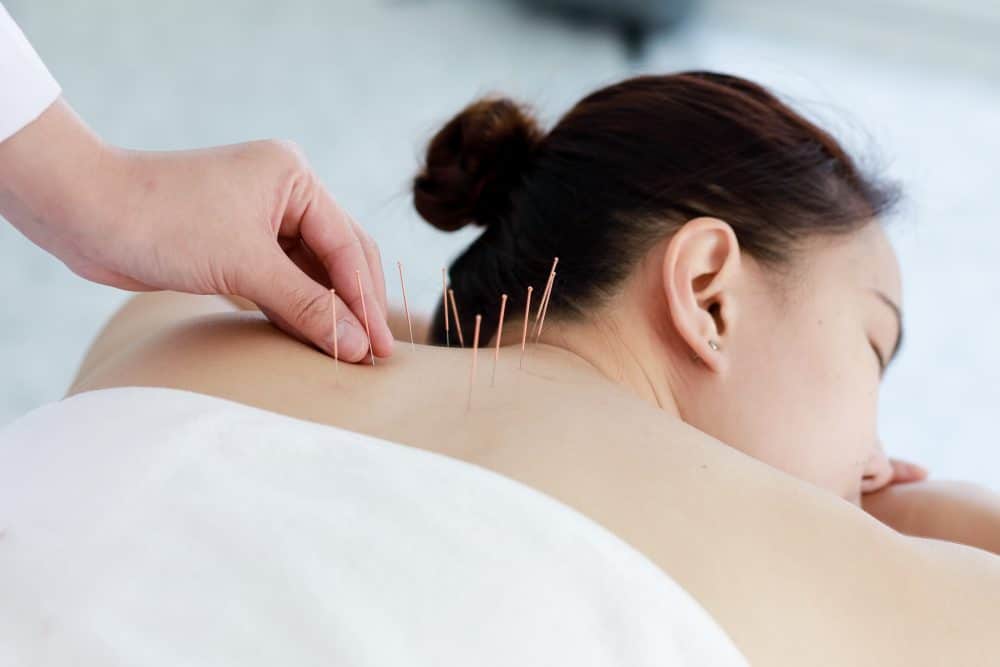 New codes to handle remote therapeutic monitoring were added:
New codes to handle remote therapeutic monitoring were added:
- 98975
- 98976
- 98977
- 98980
- 98981
Plus, new codes for principal care management were included:
- 99424
- 99425
- 99426
- 99427
These codes will allow providers to report care management services for patients with chronic conditions, such as lower back pain, in an effort to improve monitoring these complex health problems.
Top 4 Essential Acupuncture Billing Codes
The bulk of the services you will bill to insurance will likely fall under four essential acupuncture CPT codes. Since acupuncture services are always billed in 15-minute increments, your practice will use one code for the initial 15 minutes of service and then a separate code for additional units of time. Your acupuncture billing codes will only vary if you include electronic stimulation in your treatment.
- 97810 Initial Acupuncture: Initial 15-minute insertion of needles, personal one-on-one contact with the patient. (Do not report in conjunction with 97813; use one or the other.)
- 97811 Subsequent Unit of Acupuncture: Use one unit per each additional 15 minutes of personal one-on-one contact with the patient after the initial 15 minutes, with re-insertion of needles. (May be used in conjunction with either 97810 or 97813)
- 97813 Initial Acupuncture with Electrical Stimulation: Initial 15-minute insertion of needles, personal one-on-one contact with the patient. (Do not report in conjunction with 97810; use one or the other.)
- 97814 Subsequent Unit of Acupuncture with Electrical Stimulation: Use one unit per each additional 15 minutes of personal one-on-one contact with the patient, with re-insertion of needles. (May be used in conjunction with either 97810 or 97813)
Acupuncture Billing Codes for Medicare
January marks the two year anniversary of Medicare expanding their coverage options to include acupuncture for treating chronic lower back pain. CPT codes related to billing Medicare for acupuncture treatments are as follows:
- 97810: Acupuncture, one or more needles, without electrical stimulation, initial 15 minutes of personal one-on-one contact with the patient
- 97811: Each additional 15 minutes of personal one-on-one contact with the patient, with re-insertion of needles
- 97813: Acupuncture, one or more needles, with electrical stimulation, initial 15 minutes of personal one-on-one contact with the patient
- 97814: Each additional 15 minutes of personal one-on-one contact with the patient, with re-insertion of needles
- 20560: Services with needle insertion(s) without injection(s) of 1 or 2 muscle(s)
- 20561: Services with needle insertion(s) without injection(s) of 3 or more muscle(s)
Prices will depend on the region of your holistic practice; look up specific codes based on your location here.
Codes for Patients
Medical billing codes for patients can be broken down into two categories, new and returning patients:
New Patients Billing Codes
Use these acupuncture CPT codes for when your holistic practice receives new patients. As a reminder, a new patient is defined as a patient who hasn’t received professional services from you or another provider of the same specialty who has belonged to your practice within the past three years.
- 99201 Evaluation/Management (Limited): Presenting problems are self-limited or minor: requires a problem-focused history, problem-focused examination, and straightforward medical decision-making; the provider typically spends 10 minutes face-to-face with the patient
- 99202 Evaluation/Management (Expanded): Presenting problems are of low to moderate severity; requires an expanded problem-focused history, an expanded problem-focused examination, and straightforward medical decision-making; the provider typically spends 20 minutes face-to-face with the patient
- 99203 Evaluation/Management (Detailed): Presenting problems are of moderate severity; requires a detailed history, a detailed examination, and medical decision-making of low complexity; the provider typically spends 30 minutes face-to-face with the patient
- 99204 Evaluation/Management (Comprehensive): Presenting problems are of moderate to high severity; requires a comprehensive history, a comprehensive examination, and medical decision-making of moderate complexity; the provider typically spends 45 minutes face-to-face with the patient
Returning Patients Billing Codes

These CPT codes for acupuncture can be used for your established patients. Returning patients are those who have received any professional services from you or another provider of the same specialty who has belonged to your practice within the past three years
- 99211 Evaluation/Management (Minimal): Presenting problems are minimal; the provider typically spends five minutes face-to-face with the patient
- 99212 Evaluation/Management (Limited): Presenting problems are self-limited or minor; requires a problem-focused history, a problem-focused examination, and straightforward decision-making; the provider typically spends 10 minutes face-to-face with the patient
- 99213 Evaluation/Management (Expanded): Presenting problems are of low to moderate severity; requires an expanded problem-focused history, expanded problem-focused examination, and medical decision-making of low complexity; the provider typically spends 15 minutes face-to-face with the patient
- 99214 Evaluation/Management (Detailed): Presenting problem(s) are of moderate to high severity; requires a detailed history, a detailed examination, and medical decision-making of moderate complexity; providers typically spend 25 minutes face-to-face with the patient
Acupuncture CPT Codes for Physical Therapy Treatments
Acupuncture practices use a variety of treatments and modalities to help their patients. These treatments and modalities help strengthen, relax, and heal muscles. Below are a few commonly-used acupuncture CPT codes your practice may encounter.
- 20550 & 20551 Tendon Injection: Single tendon injection for the treatment of fasciitis. Could include multiple injections into a single tendon sheath (CPT code 20550) or the tendon origin (CPT code 20551)
- 20552 & 20553 Muscle Injection(s): Injections involving single or multiple trigger points. Could be used to treat one or two muscles (CPT code 20552) or three or more muscles (CPT code 20553)
- 97010 Heat Therapy: Application of a modality to one or more areas; hot or cold packs
- 97016 Cupping: The use of a vasopneumatic device may be considered reasonable and necessary for the application of pressure to an extremity for the purpose of reducing edema
- 97026 Infrared Therapy: The application of infrared therapy is considered medically necessary for patients requiring the application of superficial heat in conjunction with other procedures or modalities to reduce or decrease pain/produce analgesia or reduce stiffness/tension, myalgia, spasm, or swelling
- 97110 Therapeutic Exercise: One or more areas, every 15 minutes; therapeutic procedures to develop strength and endurance, range of motion, and flexibility with direct (one-on-one) patient contact
- 97112 Neuromuscular Reeducation: Treatments to restore movement, balance, coordination, kinesthetic sense, posture, and/or proprioception for sitting and/or standing activities with direct (one-on-one) patient contact
- 97140 Manual Therapy: Techniques such as mobilization and manipulation, manual lymphatic drainage, and manual traction, one or more regions, every 15 minutes with direct (one-on-one) patient contact
- 97124 Massage Therapy: Includes effleurage, petrissage, and/or tapotement (stroking, compression, percussion) with direct (one-on-one) patient contact
- 97530 Kinetic Activities: Use of dynamic activities to improve functional performance, every 15 minutes with direct (one-on-one) patient contact
Improve Your Acupuncture Practice’s Billing Processes and Revenue Cycle Management with HBS!
Documenting and billing the right acupuncture codes for insurance reimbursement can be a time-consuming process. No acupuncture practice wants to spend more time billing and coding than it does treating patients and expanding its practice. That’s where an experienced medical billing company with acupuncture CPT code experience can be an invaluable partner.
The team at Holistic Billing Services understands the unique needs of acupuncture practices and has extensive experience working with acupuncture codes to ensure you’re billing patients and insurance companies correctly. With our help, you can start seeing patients covered by insurance quickly and painlessly, no matter what type of acupuncture services you offer.
To learn more about how Holistic Billing can help streamline your practice and accelerate your revenue cycle management, contact our team today.
How committed is your team to make your acupuncture practice the best it can be? From your medical billing department to your clinical staff to your front desk reps, everyone involved in day-to-day business around your holistic practice should be motivated to help you become a top-of-the-line medical establishment.
In order to understand how well your acupuncture practice is financially operating, you need to understand which metrics to track. Knowing which key performance indicators to monitor will empower your staff to optimize their work and streamline your acupuncture practice’s overall operations.
Why Does Efficient Acupuncture Billing Matter?
If your holistic practice’s billing staff isn’t diligent with billing practices, mistakes such as upcoding, downcoding, and inaccurate information can go undetected until it’s too late. This can lead to a high number of rejected claims and ultimately impact your practice’s financial future. Ensuring accurate billing and coding can protect your holistic practice from fines and inefficient billing practices that puts your practice at risk.
Every claim that is not paid on the first submission wastes your holistic practice’s valuable time and money. The Medical Group Management Association (MGMA) estimates that the average cost to re-work a claim that has been rejected or denied is $25 for each claim. If your integrative healthcare practice has to rework 100 claims per month, then it costs your practice an average of $2,500 a month to work on unclean claims; that’s an estimated $30,000 a year! 
Additionally, inaccurately submitted claims can result in legal trouble. If your holistic practice submits too many improperly filled out claims, you can be flagged for potential fraud and abuse. The U.S. Department of Justice (DOJ) enforces laws, such as the False Claims Act and Anti-Kickback Statute, to crack down on coding abuse like improperly used modifiers, overcharged services, and more. In fact, fraudulent claims can cost your holistic practice thousands of dollars in fines!
Essential Metrics to Watch for Acupuncture Billing
As the saying goes, knowledge is power. In order to know how well your acupuncture practice is performing, you should investigate the following key performance indicators:
Net Collection Rate
When thinking about your revenue, you may be inclined to focus on gross collection rate – the total of your initial charges before adjustments. But your net collection rate is a better measurement of financial performance and collections effectiveness since it factors in the percentage (after negotiated contract write-offs) of collectible funds that are actually collected by your practice.
A 96% net collection rate is considered ideal across the industry. Anything lower than a 95% clean claims ratio means your holistic practice is losing revenue, which also indicates your holistic practice is wasting further money and time reworking rejected claims. In reality, most holistic practices have a rate that varies between 75% and 85%, which means that somewhere around 15–25% of claims submitted each month have to be worked on twice, at minimum.
Clean Claims Rate
Your holistic practice’s clean claim ratio is the average number of claims paid upon the first submission. Every provider would love to reach a percentage above 95, but it’s about more than just reaching that number – it’s about streamlining your practice!
Holistic practice budgets are tight, and your staff’s time is the most precious resource you have. So if your clean claims rate is less than 85%, it means your staff is likely having to spend extra time on identifying denial reasons, coordinating with payers, and re-submitting claims. Overall, the clean claims rate directly affects your holistic practice’s overall revenue cycle.
Holistic practices should strive for a 95% clean claims rate, however, few practices actually reach that target goal. Most practices receive reimbursements the first time a claim is submitted for approximately 75% to 85% of claims they bill, which means about one-quarter of claims are denied or delayed due to errors or incomplete documentation.
Accounts Receivable (A/R)
Accounts receivable (AR) is the balance of money due to a firm for goods or services delivered or used but not yet paid for by customers. Accounts receivables are listed on the balance sheet as a current asset. AR is any amount of money owed by customers for purchases made on credit.
Days Sales Outstanding (DSO)
This is probably one of the most critical pieces of information you need to obtain in order to run your acupuncture practice; this metric helps you budget your inflow and expenses. This is calculated by taking your A/R at the end of the closed month and dividing it by the charges at the end of the same closed month. You then take that number and multiply it by the calendar days in the same month.
Patient Balance
As with your entire payer mix, like insurance contracts, there should never be a high accounts receivable balance in any given class or insurance type. It’s really a good idea to not carry patient balances on your books for more than 90 days. If you have patient balances over this timeframe, find out why and work to resolve them as soon as possible.
Average Charge Per Visit & Pay Per Visit
Monitoring this self-explanatory metric also helps you keep track of underperformers at your practice. The average charge per visit and pay per visit are great pieces of information to have to set a standard; then, if you fall below this average on any given visit, it’s a good idea to investigate why.
Boost Your Acupuncture Billing Cycle with HBS!
By using these tips to boost your acupuncture practice’s revenue cycle, you’re sure to make the most of your practice’s revenue in the future. However, these tips definitely require time and effort to do it successfully. If you’re in need of expert medical billing services, let Holistic Billing Services be your go-to source for an error-free billing solution.
With decades of experience dealing with a broad range of medical billing issues for all kinds of holistic practices, the team at HBS has seen just about every kind of medical billing error an organization can make. That’s why our clients trust us to help them manage their insurance claims to ensure they’ll be accepted as clean claims on the first attempt, avoiding lengthy back and forth negotiations with the insurance company. And best of all, you’ll avoid the scrutiny of federal and state auditors.
Contact us today to learn about Holistic Billing Services medical insurance billing services and find out how we can help you increase your clean claims rate!
There are challenges unique to being a job seeker in today’s world, but there are also challenges regarding hiring practices, especially in the holistic practice industry. How can you continue to grow your holistic practice with the best talent? What can your holistic practice do to ensure the smoothest onboarding experience for your new hire?
Find your answers to your questions surrounding hiring best practices further in this article and help your holistic practice ensure both growth and success.
Why Following Hiring Best Practices Matters for Holistic Health Care Practices?
Here at Holistic Billing Services, we understand that holistic medicine is unlike most medical specialties. This has its advantages – less local competition, more loyal patients, freedom to run your practice as you see fit – but can also come with drawbacks, like problematic payer relationships, smaller patient populations, and a smaller pool of potential employees with a background in holistic medicine or billing. 
Since it can be challenging for holistic practices to find job candidates with specialized experience, it‘s critical to hire as smartly as possible. The key is not to expect any employee to walk in with a keen understanding of the ins and outs of your holistic practice. Rather, it‘s essential to make sure you hire staff with the capacity to learn quickly and provide your holistic patients with top-of-the-line service. Here are some tips on attracting best-in-class applicants, making sure they‘re right for your holistic practice, and getting them to choose to work for you.
What Are The Best Hiring Practices?
There are many facets to the hiring process, no matter what industry you’re in! The following best practices tips will help make this process more focused, positive, and rewarding for your holistic practice.
Have an Open Mind During Recruiting
Look around your holistic practice’s office and do a mental audit of your current staff. Are you happy or unhappy with their performance? What skills are missing from your current team? Which employee‘s performance would you most like to see emulated by an incoming staffer?
Avoid making repeat mistakes – did your last two temp-agency hires prove unsuccessful? Try advertising with an online job posting site, instead. Or, if you‘re happy with the team you have, ask around for referrals; good people tend to know good people!
As you review resumes, think through your goals and the human capital on your team. Do you have a capable staff that could train a ’blank slate‘ hire without holistic healthcare experience? If so, don‘t discount recent graduates. If not, don‘t feel bad about holding out for someone with a more specific medical office background.
Plan and Align Expectations with Hiring Managers
Your holistic practice should be leveraging data to help you target the right candidates for your open positions, conducting intake meetings with hiring managers, and coming prepared to those meetings armed with data to help guide the conversation. Intake meetings are an essential foundation for the employment process; recruiters and hiring managers need to be aligned on recruiting goals and ideal candidate profiles, especially when scouting for new or unique positions. As the person or team with expert knowledge on the holistic practice industry, you should be able to speak to the number of potential candidates available in a given market, as well as insights on salary expectations or market cost of the position you’re hiring for.
Be Thorough & Honest During Callbacks and Interviews
In the interest of time, you may want to just pluck out the first few qualified candidates from your applicant pool and bring them in right away. Do your best to avoid acting on that impulse! Narrowing down your list too quickly can put you in a bind, and if the interviews go poorly, you‘ll be back to square one.
Instead, conduct five-minute phone interviews with 7-10 strong candidates, and bring the top four in for interviews. That way, you‘ll have a good idea of the candidates‘ interpersonal skills before they come into your holistic practice.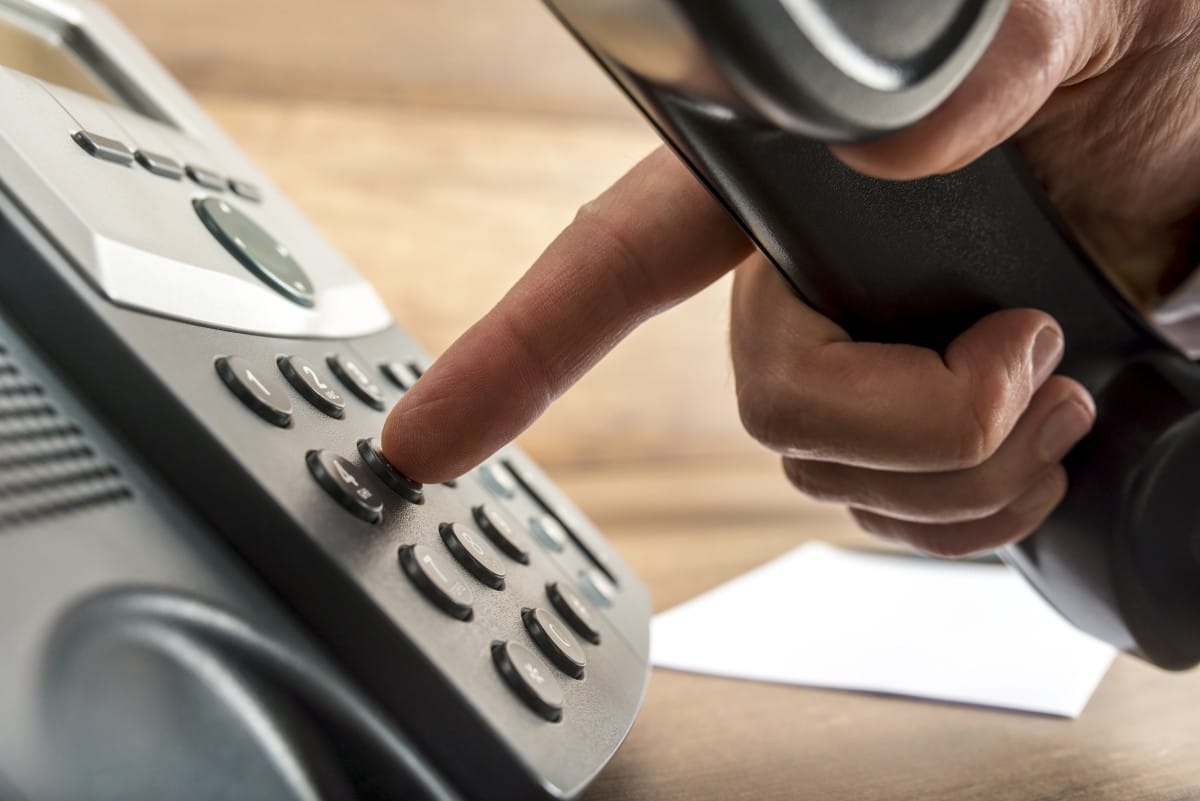
When interviewing candidates, give them an honest overview of what the job entails and how much it pays; observe how they react. Are they eager? Intimidated? Displeased? Don‘t shy away from explaining the ’tough parts‘ of the job; the hire you choose should be prepared to accept the good and bad aspects of working at your holistic practice. It behooves all parties involved to have a candid conversation about the rewards and challenges of the work!
Be Direct During Offers & Onboarding
If you have only one opening, avoid making an on-the-spot offer until you‘ve interviewed your top four candidates. Once you‘ve met them all and narrowed it down to the right person, extend the offer right away while being direct about the start date and pay. Don‘t give the offeree too much time to decide whether to accept; you don‘t want to lose your #2 prospect to another opportunity if #1 doesn‘t work out.
Then, prepare to make your new hire a well-informed employee by plotting out your training plan in advance of your new staffer‘s first day. Who will be the primary trainer? Who will cover the trainer‘s other responsibilities while he or she tends to the new hire? Try to plan a comprehensive experience for your holistic practice’s newest employee, one that includes demonstrations of daily task management like record keeping, resources pertinent to training, icebreaker questions to help them acclimate to the team, and more. These efforts will help them adapt to your holistic practice’s environment, and give them a foundation for success!
Set Your Expectations From the Start
An essential part of bringing your newest employee up to speed for your holistic practice is to clarify your expectations of them and their progress over the course of a set period of time. Make sure your new hire understands how long you expect training to take, and how soon you‘ll expect them to start working with patients and contributing to office productivity. Establishing a general timeframe for them to feel comfortable navigating your holistic practice and personal timeline for becoming more involved with their duties will help you evaluate their progress. Maintaining clear communication about such expectations, and being available to help answer questions or challenges they encounter, will help them thrive in your holistic practice’s environment. Careful planning is always the best way to ensure any new hire‘s success.
How Holistic Billing can Elevate Your Holistic Hiring Practices
Established in 1999, Holistic Billing Services is an integrative health services firm focused on streamlining your documentation, billing, and coding process to enhance your revenue cycle management. Our secure online portal provides acupuncture practices, massage therapy practices, and chiropractic practices an easier way to manage their health insurance billing so they can focus on delivering quality patient care and growing their practices through effective hiring processes!
As the nation’s largest billing provider for holistic healthcare, we service over 1,200 practices across the country. Thanks to our knowledge of insurance reimbursement and healthcare auditing risks, holistic practitioners average over $185 per hour of treatment with our billing and coding services. Contact us today and see what we can do for your holistic practice!
Over the last few years, more people than ever before are turning to acupuncture and other holistic treatments to alleviate ailments. As more people intentionally seek this service, your practice is likely to grow in size as members of your community begin to visit.
With this exciting growth in business comes the not-so-exciting amounts of medical billing paperwork – not to mention the headache of it all! Holistic Billing Services knows medical billing can be a challenge to navigate, especially for acupuncture practices. This post addresses some of the most frequently asked questions about billing for acupuncture to equip you with the fundamentals of medical billing.
What is Medical Billing?
Medical billing involves a healthcare provider submitting, following up on, and appealing claims with health insurance companies in order to receive payment for services rendered; such as testing, treatments, and procedures. It can be a long, grueling process that requires jumping through hoops left and right to receive payment for services rendered.
Why Is Medical Billing Important for Acupuncture Practices?
Though it may be a complicated process, it is also absolutely necessary for acupuncture practices because it is the most common way of getting paid for services rendered. The majority of your patients will likely have some form of insurance as payment, so your practice needs to be adept at navigating the many facets of dealing with insurance companies. This includes being knowledgeable of the appropriate medical billing codes for the treatment you provide to your patients, keeping track of the relevant patient records, and understanding how to communicate with the insurance company in order to be reimbursed.
Top Acupuncture Billing Questions and Answers
Medical billing can be a challenging portion of your acupuncture practice’s administrative needs. Let’s review some of the top acupuncture billing questions with our expert answers:
When Should I Update My Insurance Verifications and Medical Credentials?
Insurance verification is a critical component of billing insurances for acupuncture, and medical credentialing is a key part of this, too. Current verifications have the strongest correlation with successfully getting claims paid, which is obviously essential to your acupuncture practice. Patient plans and/or benefits will often change at the start of a new year, so it’s imperative you request new insurance verifications as soon as the new calendar year starts.
I am In-Network for a Couple of Insurance Companies, How Often Should I Re-Negotiate My Rates?
Managed care contracts are usually written to auto-renew on an annual basis so you will want to analyze your contracts annually. Use the end of the year to calculate your per-visit reimbursement for a given contract and compare it to per-visit reimbursements for your cash and out-of-network patients. Based on these figures, you can determine if the volume of patients seen from a particular payer offsets any variance in reimbursement. Then, negotiate accordingly.
Which Procedure Codes are Most Frequently Used by Acupuncturists?
In general, the most frequently used CPT procedure codes are those relating to medical evaluation and management, a few of which include:
- 99201-05: New Patient Office Visit
- 99211-15: Established Patient Office Visit
- 99281-85: Emergency Department Visit
- 99241-45: Office Consultation
Specifically for acupuncturists, the following are the most frequently used CPT codes:
- 97810: Initial Acupuncture Session (Tip: do not report this in conjunction with 97813; use one or the other)
- 97811: Subsequent Unit of Acupuncture (You may use it in conjunction with either 97810 or 97813)
- 97813: Initial Acupuncture with Electrical Stimulation (Don’t report this in conjunction with 97810; use one or the other)
- 97814: Subsequent Unit of Acupuncture with Electrical Stimulation (This may be used in conjunction with either 97810 or 97813)
Accurate medical billing codes are instrumental for streamlining your billing process and further growing your acupuncture practice.
Do You Have a List of Insurances That Will Pay for Acupuncture That I Can Use?
Unfortunately, we don’t have a perfect answer for this! Insurance benefits will vary from plan to plan – even within the same insurance company – so there’s no quick shortcut for knowing if the patient‘s insurance will cover acupuncture. It’s really a case-by-case basis when serving patients who might have Medicare, go through the VA, or hold a private insurance policy otherwise. HBS recommends that you verify the patient‘s benefits before you treat the patient by contacting the payer directly or confirming their insurance plan prior to each visit.
Do I Have to Implement Electronic Health Records (EHR) in My Practice?
No, although you will need to document each patient visit, there is no legal mandate to implement EHR for your acupuncture practice. The Centers for Medicare and Medicaid Services (CMS) rolled out Meaningful Use non-compliance penalties in 2015, but most acupuncture practices do not meet the minimum revenue standard for Medicare so these penalties should not apply to your practice.
Though not legally required, using electronic health records can greatly streamline your administrative tasks and help your acupuncture practice operate more efficiently.
Can I Bill Insurances for Massage Therapy?
Yes, there are insurance plans that will pay for massage therapy treatments performed by a licensed massage therapist or licensed acupuncturist! As always, be sure to verify the patient’s insurance benefits information and utilize accurate medical billing codes. The following are the most frequently used for massage therapy sessions:
- 97124: Massage Therapy
- 97140: Manual Therapy

- 97112: Neuromuscular Re-Education
- 97010: Hot/Cold Packs
- 97110: Therapeutic Exercise
Have More Questions About Acupuncture Billing? Reach Out to the Experts at HBS!
HBS is an acupuncture billing service that is experienced in billing for both licensed massage therapists and licensed acupuncturists. As an experienced billing provider for holistic practices, Holistic Billing Services can help your practice navigate the insurance billing process to minimize denials and increase revenue.
With our team of experts by your side, you can focus more on treating patients to help your practice grow rather than worrying about insurance billing. To learn more about our acupuncture or massage therapy billing services, talk to one of our billing and coding experts today.
Your patients are your business. But it’s not how many patients your holistic practice schedules that matters – it’s the profit that those patients generate that will be the difference between a successful practice and one that is closing its doors. In order to set an advertising budget, you need to understand the value of your patients, and to do that you need to understand your Customer Lifetime Value (CLV).
At Holistic Billing (HBS), we focus on billing insurance for acupuncture services allowing us to use last year’s data to analyze the CLV specifically for an acupuncture insurance patient. However, we encourage you to go through the exercise for your other types of patients as well.
Why Does Marketing Matter for Your Acupuncture Practice?
As with any business, marketing is how you attract your customers, explain your services and backstory to the community, and stay relevant to your audience. If you don’t market your holistic practice, what are the chances someone will stumble across it? Of course, word of mouth is always helpful, but that can’t be the only marketing strategy your practice utilizes.
Marketing yourself to your community as a holistic practice, detailing who you are and what your story is, and offering snippets of relevant content is a great way to get noticed and attract your best patients. Your practice can’t grow if you don’t show it off!
How Much Should Acupuncture Practices Budget for Marketing?
A good rule of thumb is to spend 5% of your gross revenue on marketing activities if you want to maintain the size of your practice. So for instance, if you collect $30,000 per month you should be spending $1500 per month on marketing.
If you’re looking to grow your practice, it’s recommended that you spend between 7% and 15% of your gross revenues on marketing depending on your goals and how aggressively you want to pursue them. It’s also understandable if your marketing budget changes a little bit over time; it should be somewhat flexible to account for the status and potential growth of your holistic practice.
What Is Customer Lifetime Value?
 Customer Lifetime Value is a prediction of the total worth of a patient to your practice. The CLV can be applied to any business, but it is particularly useful for healthcare and service sectors like your holistic practice.
Customer Lifetime Value is a prediction of the total worth of a patient to your practice. The CLV can be applied to any business, but it is particularly useful for healthcare and service sectors like your holistic practice.
The lifetime value of a customer, or customer lifetime value (CLV), represents the total amount of money a customer is expected to spend in your business, or on your products, during their lifetime. This is an essential figure to know because it helps you make decisions about how much money to invest in acquiring new customers or retaining existing ones.
In the big picture, CLV is an indicator of the profit associated with a particular customer relationship, which should guide how much you are willing to invest to maintain that relationship. For example, if you estimate one customer’s CLV to be $500, you wouldn’t spend more than that to try and keep the relationship as it wouldn’t be profitable to your holistic practice.
What Is the Lifetime Value of A Holistic Practice Patient?
No two practices are alike, thus lifetime value will vary depending on your location, the services you offer, and how long your patients stay with you. Here is how we calculate the CLV for your insurance patients:
Average Annual Value x Relationship Years + Patient Referral Value
= Customer Lifetime Value
Let’s look at the figures more closely.
First, we determine how much the average patient generates per year. For this exercise, we used acupuncture patient averages across our national claims database. This past year our clients saw their patients on average 11 times in the calendar year. The payment per visit averaged $175 for a total of $1,925 in revenue per patient. Then factor a 20% profit margin on that revenue. Therefore, the Average Annual Value of an insurance patient is $385.
Next, you will need to know the lifetime of an average acupuncture insurance patient. If you‘re not sure, use the healthcare industry average of ten years. Then, plug the number into the first part of our formula to get a patient‘s lifetime value of $3,850.
Average Annual Value ($385) x Relationship (10 Years) = $3,850
Now, this is when it gets interesting. Let’s say the average client provides referrals for two new patients during their relationship with your practice. Each additional patient is worth $3,850. So, for two patients, your Patient Referral Value is $7,700. Now, let‘s go back to the original formula:
Average Annual Value ($385) x Relationship (10 Years) +
Client Referral Value ($7,700) = Customer Lifetime Value ($11,550)
Why Does the Lifetime Value of a Customer Matter?
Once you understand the CLV for your practice you‘ll be able to make better decisions about when, where, and how much you should spend advertising on new patients. The rule of thumb is that you never want to spend more money on acquiring a new patient than your calculated Customer Lifetime Value.
Now that you are familiar with the CLV of insurance patients in acupuncture, apply the formula to your cash patients and clients using other services at your holistic practice. With this information, you can make more realistic marketing decisions that will direct you to the right type of patients and ensure your most successful practice yet.
Market Budget Basics
The first step in determining what a proper budget would be for advertising your acupuncture practice is to gather all the figures of your practice and create SMART goals:
Specific
The goal must be specific and well-defined. You and your team should be on the same page about where your holistic practice is currently at, and where you all want to see it go.
Measurable
Make sure you attach a metric to your specific goal. Of course, you want to grow your holistic practice, but by how much? Do you want to see 20 new patients over the next 6 months? Expand your practice by 20% by the end of the quarter? Calculating a number to aim for will keep you and your team on target.
Attainable
You certainly have big dreams for your holistic practice, but they won’t come to fruition overnight; your goals should be attainable for where your practice is currently. It wouldn’t be realistic to aim for 100 new clients in a week, but you could change that perspective and aim for 100 new patients in one year.
Results-focused
Ensure that your marketing budget is focused on the results that matter to you and your overall mission for your practice. Achieving a goal should be rewarding to you and your team, personally and professionally.
Time-dependent
This ties into every other facet of your SMART goals; tailor your marketing goals to a particular time frame to hold yourself accountable. This will once again affirm your holistic practice’s goals for yourself and your team, and keep everyone in alignment.
HBS recommends setting goals for patient visits, new patients, and collections, as a strategic starting point for your holistic practice. From there, you and your team should develop a month-by-month, week-by-week, and day-by-day marketing plan focused on achieving your goals.
Once you layout the marketing activities that you will be participating in both internally and externally, you can then begin to develop a budget to fund those activities.
Best Practices for Acupuncture Marketing
Now that we’ve discussed the importance and foundational basics of marketing, let’s dive into the best practices for holistic marketing:
Network with the Health Practitioners in Your Area
Whether you are an experienced practitioner or new to the industry, a sure-fire way to get solid client referrals is through the doctors, naturopathic doctors, chiropractors, physiotherapists, and other holistic practitioners in your area. These professionals work with patients who might desire a holistic approach to take care of their health, in addition to medical services. Patients who are referred to you in this manner have a high probability of following through and becoming long-term, paying clients.
Encourage Word of Mouth
Good old word of mouth is one of the best forms of flattery for any business, but especially a holistic practice. This method of marketing is one that potential clients trust the most, but few businesses have mastere d it. It’s alright to ask for referrals or testimonials from your existing clients, colleagues, friends, and family.
d it. It’s alright to ask for referrals or testimonials from your existing clients, colleagues, friends, and family.
Social media and other internet review sites are also excellent ways to encourage your patients to talk about you. Providing meaningful content and engaging with your followers can spread like wildfire and attract the right opportunities for your business.
Make Yourself as “Findable” as Possible
If they can’t find you, they won’t know you even exist! Creating an online presence via a professional website and social media profiles will demonstrate to your future patients that you want to create a consistent and welcoming impression. Potential clients will likely do some research before they put their trust in you. If they can’t look you up to research your credentials and experience, they may move on to another holistic practice with a stronger web presence.
Host or Participate in a Contest
Everyone loves to win free stuff! Whether you do an online contest or offer a drawing at an event, putting together a contest is an excellent way to collect the names of potential clients and grow your email list. You can offer a special prize or free services to the lucky winner and, hopefully, you just got yourself some great leads in the process. It’s a win-win.
With these steps and essential basics of marketing, we’re sure your holistic practice will take off! Holistic Billing Services is here to help you grow your practice in a variety of ways and has been facilitating the growth of holistic practices since 1999. Contact us today and let us help your holistic practice reach its potential!
As a medical billing company focused on holistic practices, our team of experts often speaks to hundreds of practitioners daily. Many of the questions medical practices have been around handling patient deductibles. At the beginning of every year, most patients have their health insurance benefits recalculated. That is to say, that the number of visits and deductible amounts are re-set on January 1.
So a frequently asked question through our provider hotline is, “How do I handle a patient‘s deductible?” Follow some of these tips to better manage patient deductibles so you can be paid on time for treatments.
What are Insurance Deductibles?

Insurance deductibles refer to the amount patients have to pay out-of-pocket before their insurance benefits will subsidize payment; the amount is identified when verifying insurance benefits. A patient’s deductible is determined by their insurance plan and will range in amount, so you will not know the exact balance until you verify the insurance benefits. Every insurer and plan varies when it comes to benefits, coinsurance, associated copays, and deductibles.

